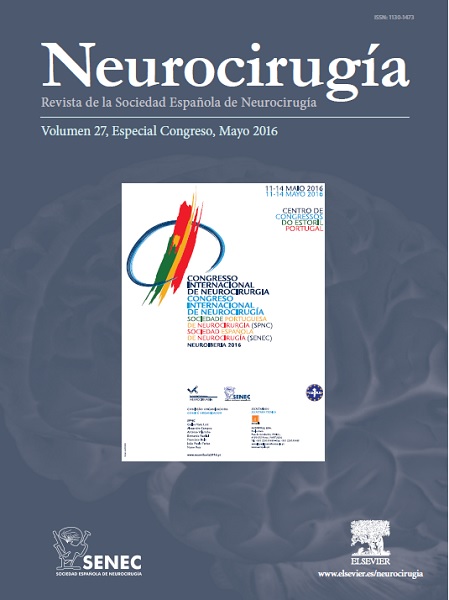P230 - Single-stage combined allograft cranioplasty and latissimus dorsi free flap for an extensive cranial defect with insufficient scalp coverage: a case report
1 Serviço de Neurocirurgia; 2Serviço de Cirurgia Plástica e Reconstrutiva, Centro Hospitalar e Universitário de Coimbra, EPE. 3Faculdade de Medicina, Universidade de Coimbra.
Introduction: Decompressive craniectomy is an established technique for treating refractory intracranial hypertension. Paramount to successful cranioplasty is soft tissue coverage, not uncommonly insufficient in cases where bone or skin flap complications occur. Bone infection and wound problems, in these settings, often require multiple/staged procedures for soft tissue augmentation and cranioplasty. We present a case of an extensive cranial defect (secondary to craniectomy flap infection) and insufficient scalp coverage repaired with patient-specific allograft cranioplasty and soft tissue reconstruction with a latissimus dorsi microanastomosed free flap. We found no other cases of single-stage allograft PEEK cranioplasty with microanastomosed muscle free-flap coverage in the literature.
Case report: A 27-year-old female patient, previously submitted to decompressive hemicraniectomy for severe head trauma and several other surgeries to treat infectious complications of autologous cranioplasty, was left with a large cranial defect and, while the wound was in good condition, there was a scalp insufficiency for cranioplasty coverage. Neurologically, she had a GCS15, speech slurring and grade 4 left hemiparesis. Single stage surgery consisted of allograft cranioplasty with a patient-specific PEEK implant and coverage with a latissimus dorsi free flap; T-T anastomoses to the superficial temporal artery and to the external jugular vein (this with interposed saphenous vein graft) were performed. Postoperative course was uneventful and excellent cosmetic results were achieved.
Discussion: Good preoperative planning and proper technique selection can result in excellent functional and cosmetic results using a single-stage procedure in complex skull defects.







